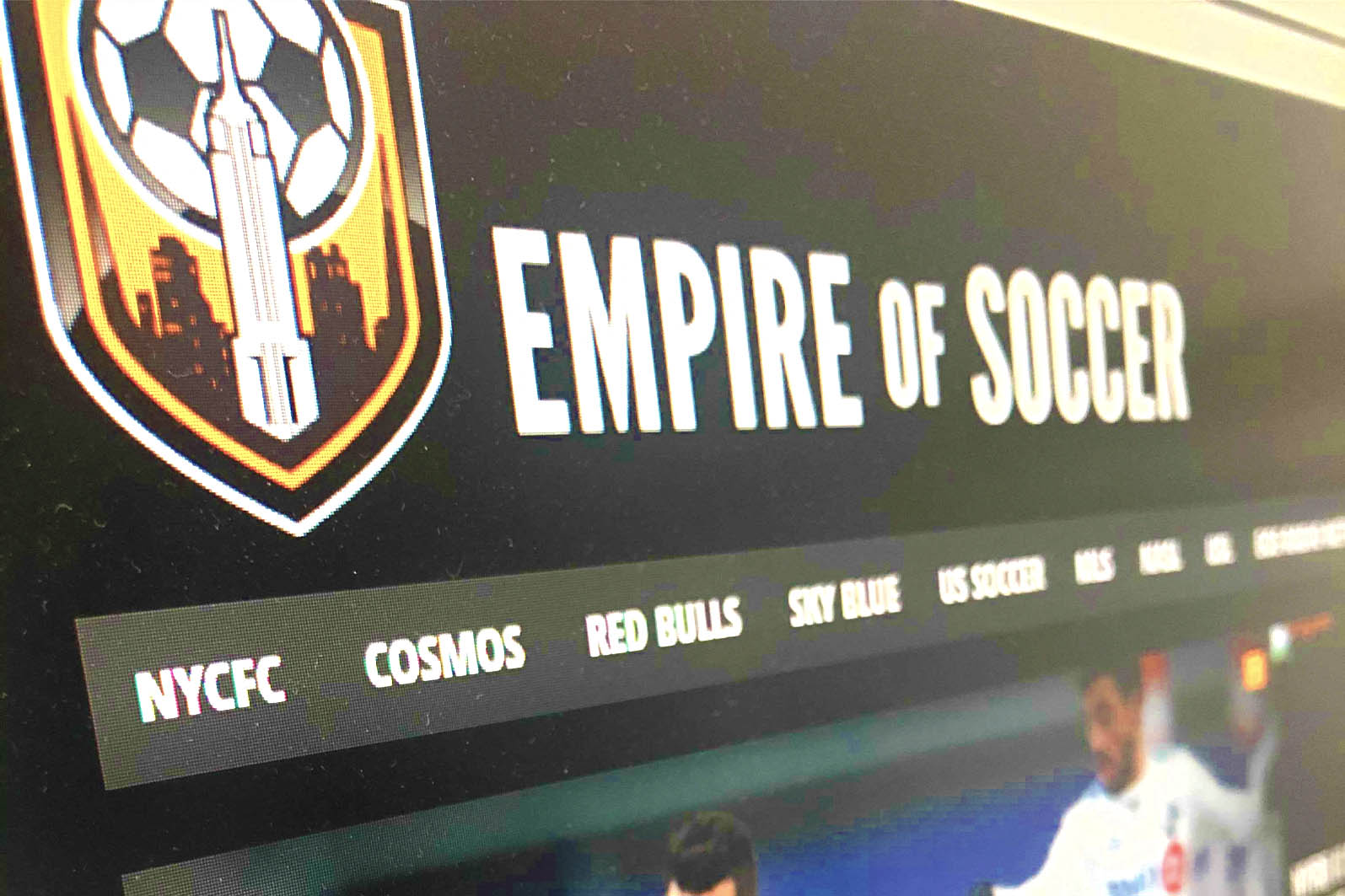Major League Soccer finished its 19th season with the highest attendance in league history.
The final average crowd of 19,149 marks the first time that MLS has cracked 19,000 fans per game for an entire season. It probably won’t be the last time.
This year’s average is part of a trend of growth that has seen attendance steadily rise since 2009, when the average crowd was 16,037. Expansion teams have been a driving force in this growth, but the league has also seen renewed success in some of its original markets. With two new teams, larger stadiums, and growing popularity, MLS could very well be above 20,000 fans per game next year.
Here is a team-by-team attendance breakdown:
Seattle Sounders: 43,734
For the first time in six seasons, the Sounders failed to set an MLS attendance record. While this year’s average fell just short of 2013’s figure, it’s still an absurd outlier, almost double the second-best attendance in the league. Seattle’s crowds are the envy of everyone and a testament to successful management and marketing.
Toronto FC: 22,086
After a boisterous offseason, Toronto FC sold out their first 15 games in MLS en route to setting a franchise attendance record. Crowds had dwindled to just over 18,000 in 2013, and this year’s increase was one of the largest in the league. However, after missing the playoffs yet again, TFC undoubtedly left a sour taste in their supporters’ mouths. The club plans to expand BMO Field to 30,000 seats before next season, but they’ll have to once again win back the trust of a weary fanbase in order to fill it.
LA Galaxy: 21,258
The Galaxy had the third-best attendance in MLS this season, and yet, there’s a sense that they could do more. Attendance at the StubHub Center was down by almost 1,000 compared to 2013, and more significantly from LA’s Beckham-era heights. While crowds are among the largest in the league, they often appear small in a venue that holds 27,000 people. AEG has pledged $15 million in improvements to the StubHub Center, but they can’t improve a location that has proven to be less than ideal.
Portland Timbers: 20,806
The Timbers found room for 132 more people this year, as they continued to sell out every MLS game at Providence Park. Portland has the longest season-ticket waiting list in MLS, and even a disappointing season seems unlikely to shorten it. The compact plot of land leaves little room for expansion, but there are rumblings that the club wants to increase capacity by replacing seats with terraces for the Timbers Army.
Vancouver Whitecaps: 20,408
This season has been good to the Whitecaps so far. Along with reaching the playoffs, they posted the best average attendance of their four seasons in MLS. That’s a very good attendance figure, but Vancouver hasn’t quite matched the constant sellouts of its Cascadia counterparts. Though capacity at BC Place is artificially reduced to 21,000, the Whitecaps failed to sell out six of this year’s 17 home games. Vancouver celebrated the club’s 40th anniversary this year; the original, NASL Whitecaps bettered this attendance in 1979, ’80, and ’81.
Real Salt Lake: 20,352
Real Salt Lake’s 10th season was their most successful yet, at least in terms of attendance. Last year’s run to the MLS Cup Final led to a spike in season-ticket sales for RSL, and they bettered 2013’s average attendance by more than 1,000 fans per game. There were doubts about the market when Salt Lake City was given an expansion franchise, but strong management has proven those doubts wrong in RSL’s first decade.
Houston Dynamo: 20,117
Empty orange seats are very conspicuous on TV broadcasts, but the Dynamo continue to announce some of the best attendances in the league. Despite missing the playoffs, Houston’s average attendance was up very slightly over 2013. With Dominic Kinnear leaving, and the Dynamo possibly going to the tough Western Conference, Houston fans may have to deal with a struggling team for the first time.
Sporting Kansas City: 20,003
The defending champions saw a slight uptick in attendance from last year’s franchise high. After a decade-and-a-half spent struggling in stadiums that belonged to other sports, the move to Sporting Park has been a godsend for the Kansas City franchise. They’ve now sold out 53 consecutive MLS home games. Over this time, Kansas City has been a market starved of success; the resurgence of MLB’s Royals might draw some eyes away from SKC in the future.
New York Red Bulls: 19,421
Like the Galaxy, the Red Bulls have a stadium that’s a couple thousand seats too big for its own good, but the raw numbers are very respectable. Their average attendance is down just slightly from the previous year, by 40 fans per game. That’s hardly cause for concern, but it remains to be seen how the birth of New York City FC will affect fortunes across the river. With growing questions about the ownership, the next couple years may prove pivotal for one of the league’s original franchises.
Philadelphia Union: 17,632
The Union came close to their first trophy in this, their fifth season, but the year ended in disappointing fashion. Frustration with the front office has been building, and may have contributed to the smallest average attendance in Philadelphia’s five-year history. The Union fare better than most other teams who play in suburban stadiums, but they need to start rewarding those fans with success on the field.
Montreal Impact: 17,421
The Impact had the largest attendance drop in the league from 2013, which is perhaps to be expected given the drop in their performances. After making the playoffs last year, Montreal finished this season with the worst record in MLS. The novelty has worn off, and the Impact need to use this offseason to improve the on-field product.
DC United: 17,030
That final average is skewed significantly higher thanks to a doubleheader played at FedEx Field. Spain and El Salvador drew 53,267 for a pre-World Cup friendly, and many of those fans left before a 0-0 draw against Columbus. But even without that outlier, improved performance brought more fans out to RFK Stadium. As it became clear that DC could contend in the Eastern conference, their final four home games all drew more than 19,000 fans. The resurgence is well timed for United, as they push the city to replace RFK with a soccer-specific stadium.
Columbus Crew: 16,881
The Crew improved on last year’s attendance and posted their highest average crowd since 2002. As with a couple other teams, the Crew have seen steady increases in attendance over each of the past few years. With a playoff birth and a nice new crest, there’s no reason to think that this growth won’t continue next year.
FC Dallas: 16,789
This isn’t a particularly impressive figure for MLS in 2014, but it is a franchise record for Dallas, shattering the previous high set in their inaugural season of 1996. The club moved to suburban Toyota Stadium in 2005, and it seems they’ve finally figured out how to get fans out to Frisco. Attendance has increased by at least 8% every year since 2010, and this year’s playoff berth could lead to further growth.
New England Revolution: 16,681
The high-profile signing of Jermaine Jones certainly contributed to the largest average attendance in New England since 2008. But he can’t take all the credit. Attendance was up before Jones arrived, and, as in Dallas, has been increasing since 2010. Gillette Stadium remains a poor home for the Revs, but their fans have shown a willingness to make the trek to Foxboro for a well-run, competitive team.
Chicago Fire: 16,076
This year’s average is an improvement on last year, but it’s about par for the course for the Fire since they moved to Toyota Park in 2006. The Fire were once one of the league’s most successful teams, on and off the field, but it seems they’ve been stagnant while MLS as a whole has improved. Chicago has no shortage of soccer fans, but poor performances and a poorly-located stadium have largely kept them from fully embracing the Fire.
Colorado Rapids: 15,082
The Rapids are another original team with a suburban stadium, and they haven’t yet made it work. They’ve averaged more than 15,000 fans in each of the last three seasons, but that is a very low bar in today’s MLS. The team finished the season with just two points from their final 14 games, but the smallest crowds were at the start of the year, as Colorado took its time thawing out from winter.
San Jose Earthquakes: 14,947
The Earthquakes will finally leave the tiny confines of Buck Shaw Stadium next year, and they’ve already sold 8,000 season tickets for their new home in 2015. Buck Shaw holds just 10,525, but games at Stanford Stadium and Levi’s Stadium allowed San Jose to post their best average since 1999, when they played at Spartan Stadium. They plan to continue hosting select games at those venues in the future, and they should have no problem setting a club record for attendance in their new stadium.
Chivas USA: 7,063
If this is the end for Chivas USA, it will be an addition by subtraction for MLS’s attendance. Without Chivas dragging the league average down, MLS would have averaged 19,820 fans per game instead. Chivas’ average was a record low, not just for the club but for the league as a whole. Their attendance struggles are perhaps the biggest reason why the league is looking for a fresh start in Los Angeles.
When it comes to attendance, Major League Soccer teams can be lumped broadly into two groups: those playing in downtown stadiums, and those that aren’t. In general, the teams with downtown stadiums are near the top of this list, while clubs playing in the suburbs have struggled to reach their potential.
The urban/suburban divide is reflected by the league’s expansion plans. Orlando and Atlanta are building downtown stadiums, and NYCFC is committed to playing in the five boroughs. The future of clubs in Miami and Los Angeles appears contingent on finding well located homes.
The new era that MLS has been selling in recent months has as much to do with packed urban stadiums as the improved product on the field.
Archived content originally from EmpireOfSoccer.com by Ryan Brister




